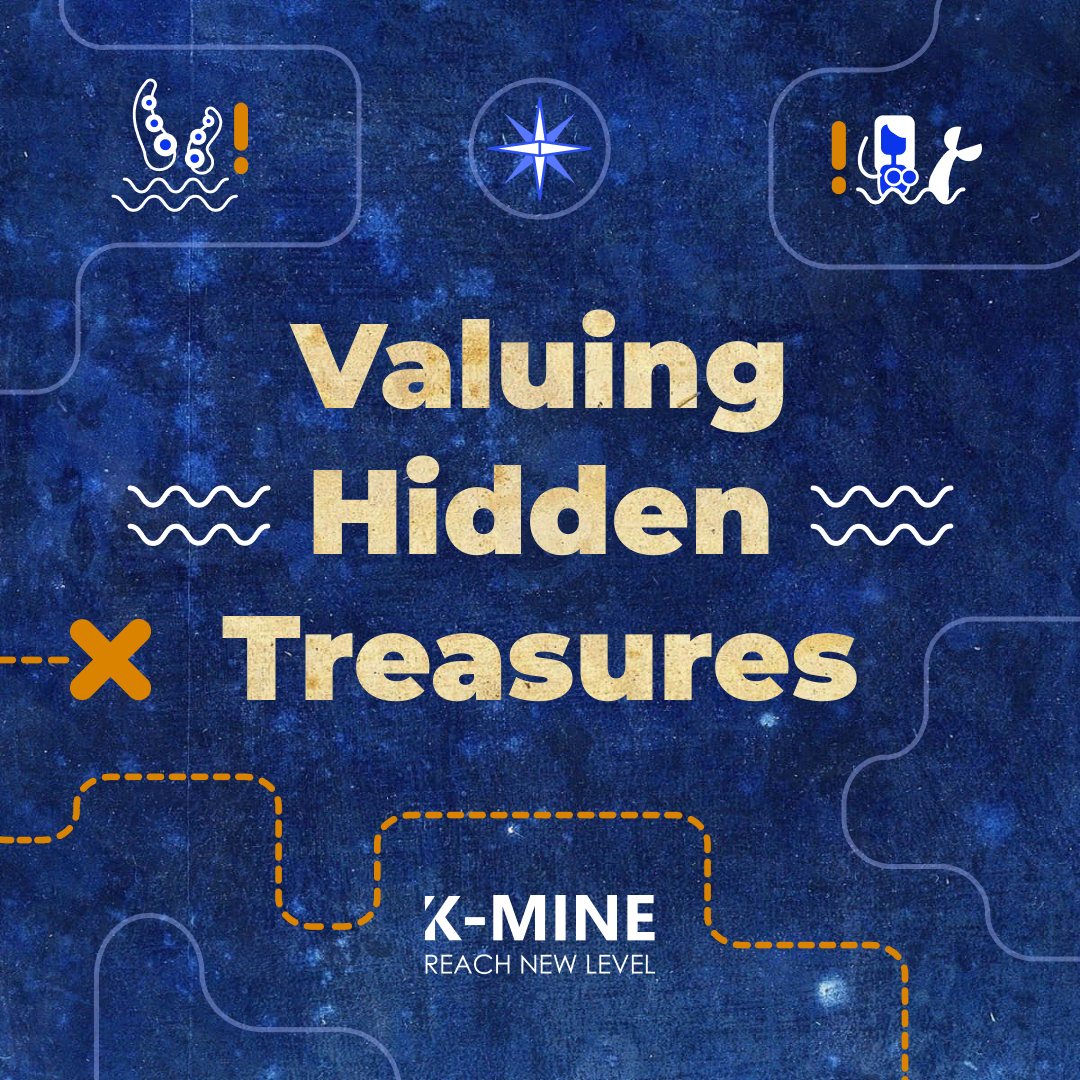 The ability to accurately value junior mining projects is both an art and a science, central to navigating the highly volatile and speculative nature of the industry. For junior miners—companies primarily engaged in the exploration and development of new mining sites—the stakes are particularly high. These entities often operate without the revenue stability that larger mining companies enjoy, making precise project valuation not just beneficial, but essential for their survival and growth.
The ability to accurately value junior mining projects is both an art and a science, central to navigating the highly volatile and speculative nature of the industry. For junior miners—companies primarily engaged in the exploration and development of new mining sites—the stakes are particularly high. These entities often operate without the revenue stability that larger mining companies enjoy, making precise project valuation not just beneficial, but essential for their survival and growth.
Importance of Valuation in Junior Mining:
Valuation in the junior mining sector is critical because it directly influences investment decisions, funding opportunities, and strategic planning. For investors, understanding the value of a junior mining project means having a clear view of the potential risks and returns, which are influenced by various factors including geological data, market trends, and the regulatory environment.
Economic Contributions and Market Size:
The junior mining sector plays a pivotal role in the global mining industry, often driving exploration activities that larger companies may deem too risky or peripheral. According to a report by S&P Global, junior miners were responsible for approximately 35% of total global exploration budgets in 2023, with this figure showcasing the sector’s critical role in sustaining the mining industry’s future. This exploration spending not only contributes to the discovery of new mineral deposits but also significantly impacts local economies by creating jobs and stimulating related businesses.
Investment Flows and Challenges:
Investing in junior mining projects carries inherent risks, largely due to the uncertainty about the quantity and quality of the mineral resources until they are extensively drilled and analyzed. The market volatility can be seen in the fluctuations of investment in the mining sector, where, according to the TMX Group, investment in junior mining on the TSX Venture Exchange saw an upswing of 20% in transaction volumes in the first quarter of 2024 alone, reflecting the speculative yet opportunistic nature of the industry.
Regulatory and Compliance Impacts:
The valuation of junior mining projects is also heavily influenced by regulatory standards and compliance with international reporting frameworks like NI 43-101 in Canada and the JORC Code in Australia. These regulations ensure that the valuation processes are transparent, consistent, and uphold certain standards, which in turn helps in maintaining investor confidence and market integrity.
Key Valuation Models
Valuation models are crucial for assessing the economic viability of junior mining projects, helping stakeholders gauge future revenue potential and associated risks. This section explores the most widely employed valuation techniques in the mining sector, tailored to various project stages and mineral types.
Discounted Cash Flow (DCF)
The DCF model is a cornerstone of financial valuation, particularly effective for projects with defined resource estimates and development strategies. It involves estimating future cash flows and discounting them to present value using a risk-adjusted rate. In mining, DCF calculations might reveal, for example, that a gold mining project with a 20-year lifespan has a net present value (NPV) of $150 million, underscoring its investment appeal if initial capital costs are considerably lower.
Real Options Valuation (ROV)
ROV offers a dynamic valuation approach by considering managerial decision-making options like expansion, delay, or abandonment in response to evolving market and project conditions. This method is especially beneficial for exploration-stage projects, adding value by quantifying potential future investment decisions. A junior miner might employ ROV to evaluate expanding a lithium project should the demand for electric vehicle batteries surge.
Comparable Company Analysis (CCA)
This method compares the target project to similar companies or projects based on key financial metrics such as EV/Resource, P/NAV, or P/E ratios. CCA is useful when detailed cash flow projections are unavailable, often applied in early project stages. For instance, assessing a junior cobalt explorer might involve benchmarks against peers on market capitalization per tonne of resource.
By integrating these valuation models, investors and analysts can derive informed, nuanced investment insights. Each model provides a different lens through which the financial health and potential of a mining project can be viewed, highlighting the diverse factors that influence valuation in the mining industry. As the exploration of valuation challenges continues, the adaptability and precision of these models become apparent, essential for navigating the complexities of the junior mining market.
Challenges in Valuing Junior Mines
Valuing junior mining projects presents a complex challenge due to inherent uncertainties and the speculative nature of early-stage exploration. Here, we explore the primary obstacles that complicate these valuations and provide insights into the factors that analysts must consider to achieve accuracy and reliability.
Market Volatility’s Role in Valuation
Junior mining projects are highly sensitive to fluctuations in commodity prices. For example, a sudden spike in copper prices due to market shortages can significantly boost the valuation of copper mining projects. Historically, precious metals like gold and silver have experienced price volatility, leading to substantial impacts on project valuations and influencing investment decisions.
Uncertainty in Resource Estimation
Accurately estimating the size and grade of mineral deposits is fraught with challenges, particularly for early-stage projects that often depend on inferred resources, which carry the highest risk due to their speculative nature. Additionally, the complexity of a deposit’s geology can greatly influence extraction costs and operational feasibility, thereby impacting economic valuation.
Navigating Regulatory and Environmental Risks
Junior miners face substantial compliance costs associated with environmental regulations, which can vary significantly between jurisdictions and are difficult to estimate accurately. Moreover, the process of obtaining necessary permits for exploration and development can be lengthy and uncertain, directly affecting project timelines and economic values.
Challenges with Access to Capital
Securing sufficient capital to cover exploration and development costs is a significant hurdle for junior miners. The perceived high risk associated with these projects makes it difficult to attract investors without the promise of substantial returns. Investor sentiment, influenced by broader economic conditions and the mining sector’s performance, can further complicate funding efforts.
Keeping Pace with Technological and Methodological Advances
Rapid advancements in mining technology can render previous valuation models obsolete, necessitating continuous updates and adaptations. As valuation methodologies evolve, integrating new techniques into traditional models is complex but essential to accurately reflect a project’s potential.
Expert Perspectives and Real-World Applications
Experts often emphasize the importance of robust scenario planning and sensitivity analysis to help investors understand the potential outcomes under various market conditions. Case studies highlight how companies that adapt quickly to market changes and employ comprehensive risk assessments are more likely to manage valuation uncertainties effectively and secure necessary funding.
Addressing these challenges is critical for providing precise valuations of junior mining projects. These valuations not only influence individual investment decisions but also affect broader market perceptions and strategic directions within the mining industry. The need for expertise, thorough analysis, and innovative approaches is evident as we delve deeper into the valuation process.
The Role of Technical Reports in Mining Valuations
Technical reports are crucial documents that provide an all-encompassing analysis of a mining project, covering geological, environmental, and engineering aspects. As junior mining projects advance from exploration through to development, each subsequent stage requires more detailed studies, refining data and upgrading resource classifications. This process not only enhances the project owners’ understanding of their asset but also allows investors to more accurately assess the project’s viability and potential returns.
Technical Reporting Standards:
NI 43-101 (Canada): The National Instrument 43-101 sets the standard for all public disclosure of scientific and technical information concerning mineral projects in Canada. It requires detailed reporting on mineral resources and reserves, ensuring that the information disclosed is accurate, reliable, and verifiable. Compliance with NI 43-101 helps junior miners not only in maintaining transparency but also in building investor confidence by providing rigorously assessed and documented estimates.
JORC Code (Australasia): The Australasian Code for Reporting of Exploration Results, Mineral Resources and Ore Reserves, known as the JORC Code, is a professional code of practice that sets minimum standards for the public reporting of minerals exploration results, mineral resources, and ore reserves. Its framework ensures that these reports are prepared by competent persons and are based on sound principles and transparent practices.
Resource Categorization
Understanding and implementing the categorization of mineral resources is crucial. Resources are typically classified into three main categories based on geological confidence:
Inferred: The lowest level of geological confidence. This category is used for mineral occurrences where there is evidence of mineralization but where the shape, size, and grade are too poorly defined to have any economic considerations applied to them. These resources carry the highest risk.
Indicated: A higher level of confidence than inferred and is used when the quantity, grade, and mineral content can be estimated with sufficient confidence to support mine planning.
Measured: The highest level of confidence. Resources are classified as measured when their geological characteristics are known with enough precision to support detailed mine planning.
As a project advances, the goal is to progressively reclassify resources from inferred to indicated to measured, increasing their economic viability and reducing the associated risks. Each increase in resource category typically involves more detailed exploration and data collection, providing a stronger basis for investment decisions.
Progressive Detailing in Reports
Exploration Stage: In the early stages, technical reports primarily focus on identifying mineral occurrences and providing initial estimates of size and grade. These reports often classify resources as inferred, which indicates a lower confidence level due to limited data.
Advanced Exploration: As projects progress, additional drilling and sampling are conducted to better understand the deposit. This leads to more detailed reports that aim to reclassify resources from inferred to indicated. This transition reduces uncertainty and begins to shape a clearer picture of the project’s potential.
Feasibility Studies: During this phase, comprehensive studies are undertaken to evaluate the economic viability of the project. These studies often result in the categorization of resources into measured resources and the establishment of proven and probable reserves, reflecting a high degree of confidence in the project’s potential profitability.
As each stage of exploration and development progresses, the continuous refinement of data in technical reports serves multiple purposes. For project owners, it provides a deeper understanding of the asset, enabling more informed decision-making and strategic planning. For investors, these progressively detailed reports offer a clearer, more reliable assessment of the project’s potential, helping them to evaluate its long-term viability.
With each update, the project’s risk profile is reassessed, and its value proposition becomes more apparent. As resources are reclassified into higher-confidence categories and feasibility studies confirm the economic potential, the project becomes more attractive to potential investors and financiers. This systematic approach to refining and upgrading technical data through successive stages of exploration and development is what ultimately drives the project’s advancement toward production.
Future Trends in Mining Valuation
The landscape of mining valuation is continually evolving, influenced by advancements in technology, shifting market dynamics, and growing emphasis on sustainability. These trends are reshaping how junior mining projects are assessed, making it essential for project owners and investors to stay informed and adaptable.
Incorporation of Environmental, Social, and Governance (ESG) Factors
ESG Integration: The integration of ESG factors into mining valuations has become increasingly significant. Investors are now more concerned with the environmental impact, social responsibility, and governance practices of mining companies. This shift is driven by the growing demand for sustainable and ethically sourced minerals, particularly in sectors like electric vehicles and renewable energy. For example, companies that can demonstrate a lower carbon footprint, community engagement, and transparent governance are likely to see a positive impact on their valuations.
Regulatory Pressure: Governments and regulatory bodies worldwide are tightening environmental regulations, making it imperative for junior miners to comply with these standards. Incorporating ESG factors into valuation models not only aligns projects with these regulations but also enhances their appeal to a broader base of investors who prioritize sustainability.
Technological Advancements and Their Impact
Automation and AI: The adoption of automation and artificial intelligence (AI) in mining operations is revolutionizing the industry. From automated drilling systems to AI-driven data analysis, these technologies increase efficiency, reduce costs, and minimize human error. Projects that leverage these advancements can significantly enhance their economic feasibility, leading to higher valuations.
Big Data and Predictive Analytics: The use of big data and predictive analytics in resource estimation and project planning is becoming more prevalent. By analyzing vast amounts of geological data, companies can make more accurate predictions about resource size, grade, and economic viability. This level of precision reduces uncertainty and risk, which is a key factor in improving project valuations.
Market Dynamics and Commodity Demand
Critical Minerals and Strategic Metals: The global shift towards green energy and digitalization has spurred demand for critical minerals such as lithium, cobalt, and rare earth elements. Junior miners exploring these resources are experiencing heightened interest and investment, as these materials are essential for technologies like electric vehicles, batteries, and advanced electronics.
Price Volatility and Risk Management: Commodity price volatility remains a significant challenge in mining valuations. The ability to manage and mitigate this risk through hedging strategies or flexible project planning is increasingly valued. Future valuation models are likely to incorporate more sophisticated risk management tools to account for this volatility.
Adoption of Innovative Valuation Techniques
Real-Time Valuation Adjustments: As technological advancements allow for continuous data collection and analysis, real-time valuation adjustments are becoming feasible. This dynamic approach to valuation reflects the latest data and market conditions, providing a more accurate and up-to-date assessment of project value.
Scenario Analysis and Stress Testing: Scenario analysis and stress testing are becoming standard practices in mining valuations. These techniques allow companies to model different economic scenarios, such as changes in commodity prices or regulatory environments, to assess their impact on project viability. This forward-looking approach is essential for navigating the uncertainties of the mining industry.
The future of mining valuation is being shaped by the integration of ESG factors, technological advancements, and the evolving demands of the global economy. Junior mining companies that adapt to these trends by incorporating sustainability, leveraging technology, and employing innovative valuation techniques are better positioned to succeed in the competitive and dynamic mining sector. As these trends continue to develop, they will redefine how value is perceived and assessed in the mining industry, setting new standards for project evaluation and investment.
Case Studies
Understanding the practical application of mining valuation is crucial for appreciating their impact on real-world outcomes. Below, we explore a few case studies from the junior mining sector that highlight how different valuation methods and strategic decisions have influenced project development, investment, and overall success.
Integra Resources Corp. – Valuing Gold-Silver Deposits in Idaho
Integra Resources Corp., a junior mining company focused on precious metals exploration in Idaho, provides an excellent example of how comprehensive technical reports and advanced valuation techniques can drive investor confidence. The company’s DeLamar and Florida Mountain projects were evaluated using a combination of Discounted Cash Flow (DCF) analysis and scenario-based modeling to assess various commodity price environments.
Valuation Impact: Integra’s ability to upgrade its resource estimates from inferred to indicated, based on extensive drilling programs, significantly boosted the project’s valuation. The technical reports adhering to NI 43-101 standards provided detailed economic assessments, which helped secure $30 million in financing in 2023. The DCF model projected a strong NPV, which was crucial in convincing investors of the project’s profitability despite fluctuating gold and silver prices.
Piedmont Lithium – Leveraging ESG and Technological Innovation
Piedmont Lithium, a junior mining company in North Carolina, has been a pioneer in integrating ESG factors into its valuation process. The company’s Carolina Lithium project, which focuses on producing lithium hydroxide for electric vehicle batteries, has gained significant attention due to its commitment to sustainability and local community engagement.
Valuation Impact: Piedmont used advanced Real Options Valuation (ROV) to factor in future expansion possibilities and the integration of new, environmentally-friendly mining technologies. Their focus on minimizing carbon emissions and reducing water usage, as highlighted in their updated technical reports, led to enhanced investor interest. The project’s valuation reflected these sustainable practices, attracting partnerships with Tesla and securing a $70 million investment round in 2022.
Great Bear Resources – A Strategic Focus on Exploration
Great Bear Resources, a junior miner operating in Ontario, Canada, successfully used a combination of robust exploration programs and strategic valuation techniques to elevate its Dixie Project. Initially classified as a high-risk exploration project, Great Bear’s ongoing drilling and sampling efforts significantly increased the confidence in their resource estimates, moving them from inferred to indicated and measured categories.
Valuation Impact: The company’s technical reports, compliant with NI 43-101, detailed the project’s growing resource base and its potential for long-term production. This approach not only attracted considerable market attention but also led to its acquisition by Kinross Gold Corporation for approximately CAD 1.8 billion in 2022. The use of DCF analysis and scenario testing under different gold price environments helped justify the high acquisition price.
NextSource Materials – Valuing Strategic Minerals
NextSource Materials, focused on developing the Molo Graphite Project in Madagascar, provides a clear example of how critical minerals are valued differently in today’s market. With the growing demand for graphite in electric vehicle batteries, NextSource utilized a combination of Comparable Company Analysis (CCA) and forward-looking scenario planning to highlight the project’s strategic importance.
Valuation Impact: The technical reports detailed the project’s capacity to produce high-purity graphite, which aligned with the global push for electric vehicles. By comparing their valuation metrics with similar graphite projects and factoring in potential future demand, NextSource successfully raised $29.5 million in 2021 to fund the project’s first phase of construction, with an NPV that reflected the strategic significance of their product.
Nouveau Monde Graphite – Integrating Advanced Technologies
Nouveau Monde Graphite, another player in the graphite sector, leveraged advanced mining technologies and sustainable practices to enhance its Matawinie Graphite Project’s valuation. The project’s technical reports emphasized the use of all-electric mining equipment, which not only reduced operational costs but also positioned the company as a leader in sustainable mining.
Valuation Impact: The integration of these advanced technologies into their operational plans, along with a robust DCF model and ESG-driven valuation metrics, allowed Nouveau Monde to secure a $50 million investment from the Canadian government in 2022. This investment was directly linked to the project’s ability to meet both economic and environmental targets, significantly increasing its appeal to a broad range of investors.
These case studies illustrate how junior mining companies can successfully apply valuation techniques to navigate the complexities of the industry. By leveraging advanced financial models, adhering to international reporting standards, and integrating ESG considerations, these companies not only secure funding but also position themselves strategically within the global market. The lessons from these examples underscore the importance of a comprehensive, data-driven approach to project valuation in achieving long-term success in the mining sector.
Wrap-Up
As the mining industry continues to evolve, the importance of accurate and forward-looking valuation techniques for junior mining projects becomes increasingly evident. Valuation is not merely a financial exercise; it is a comprehensive process that integrates geological, environmental, and economic factors to provide a holistic view of a project’s potential. Each stage of project development, from initial exploration to feasibility studies, requires progressively detailed technical reports that refine resource estimates and enhance the understanding of the project’s true value.
The incorporation of advanced valuation models, such as Real Options Valuation (ROV) and scenario analysis, allows for more nuanced assessments that consider both the inherent risks and potential rewards of mining projects. These models, coupled with the integration of ESG factors and technological advancements, provide a robust framework for evaluating the viability of junior mining ventures in an increasingly complex and dynamic market.
As the demand for critical minerals grows in response to global shifts towards green energy and digitalization, junior miners are uniquely positioned to meet these needs. However, success in this sector depends on the ability to accurately assess and communicate the value of these projects to investors and stakeholders. By staying at the forefront of valuation techniques and adapting to emerging trends, junior mining companies can better navigate the challenges of the industry and capitalize on the opportunities that lie ahead.
The future of junior mining valuation lies in the convergence of traditional financial models with innovative approaches that reflect the changing landscape of the global economy. By mastering these techniques, junior miners can unlock the full potential of their projects and contribute to the sustainable development of the mining industry.







 Back
Back
